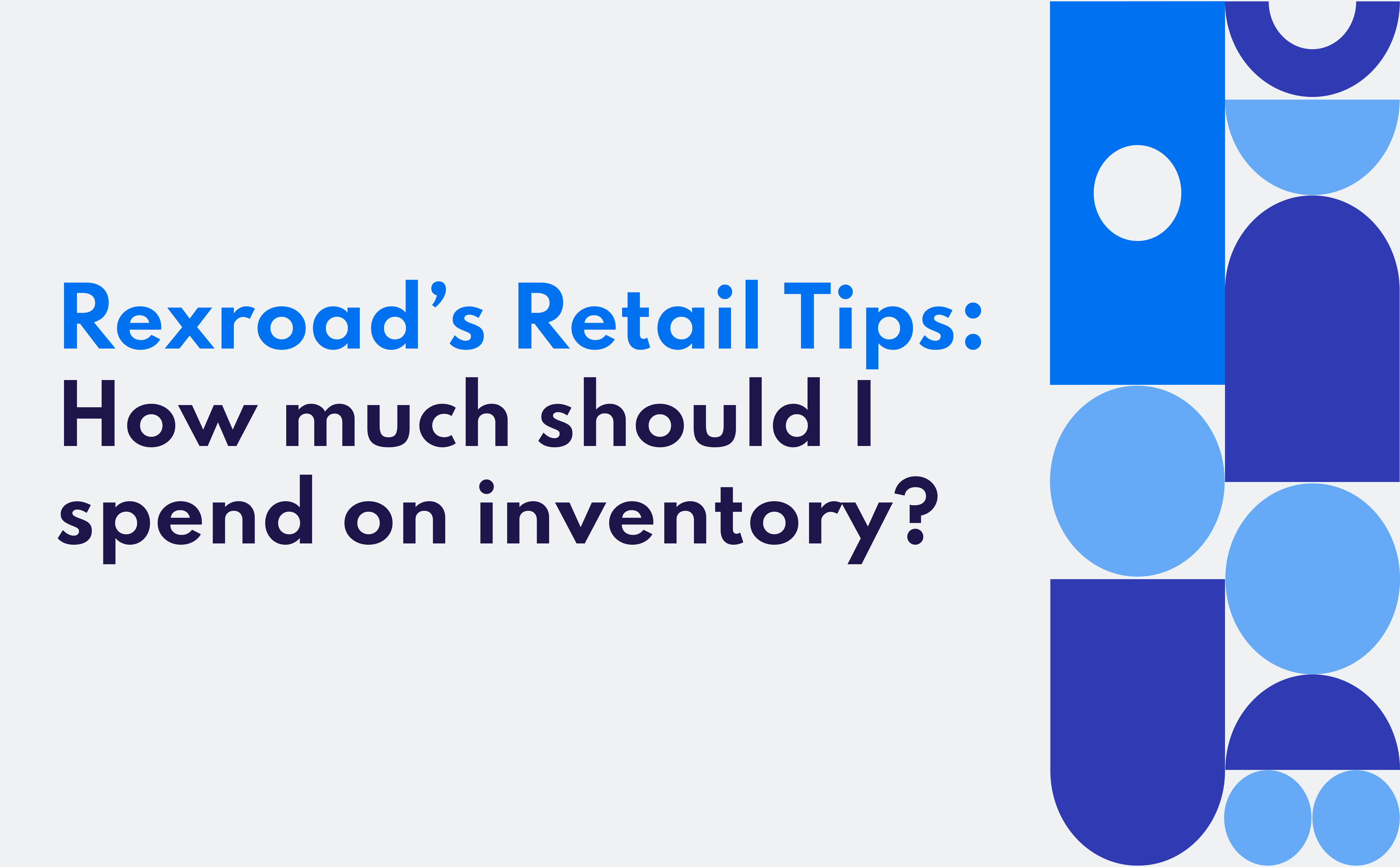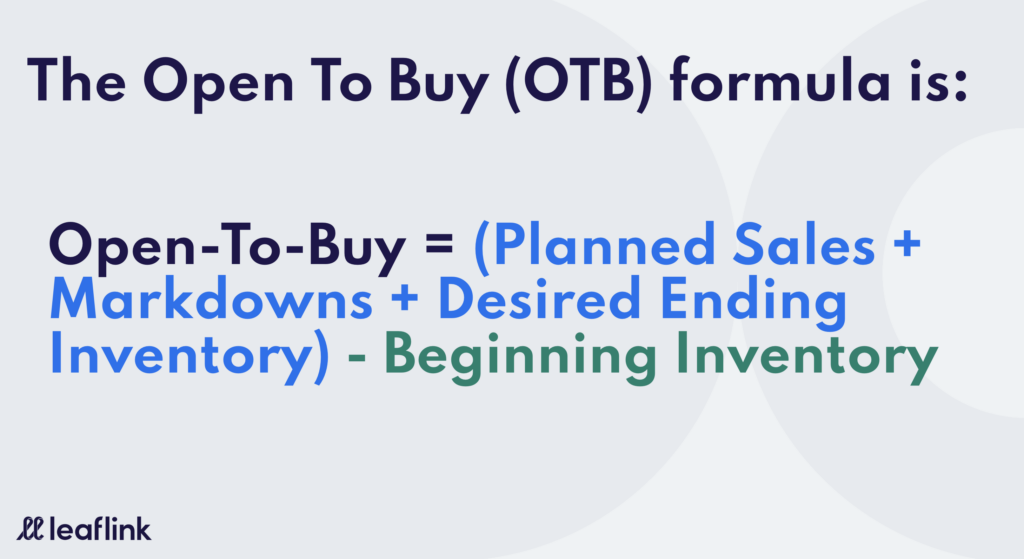
Rexroad’s Retail Tips: How much should I spend on inventory?
Navigating Inventory Challenges in Cannabis Retail with an Open-to-Buy Strategy
By Andrew Rexroad
In the fast-paced world of cannabis retail, where margins are pinched, efficient inventory management isn’t just an option—it’s a lifeline. Cannabis businesses face unique challenges: a dizzying array of products, ever-changing demand, and strict regulations. Finding the right balance is crucial. This is where the Open To Buy (OTB) method shines. OTB isn’t just a tool; it’s a strategic approach that helps you navigate the complexities of cannabis inventory management. In this post, we’ll explore how to leverage OTB for your cannabis retail operation, offer practical examples and tips, and help you be the working capital hero.
What is Open To Buy?
Think of OTB as a roadmap for inventory purchases. It’s the amount allocated to refresh your stock over a specific timeframe. In cannabis retail, where product freshness and legal compliance matter, OTB is a tool for informed decision-making, analyzing sales trends and customer preferences, and staying up-to-date with regulations and product lifespans. This data-driven approach helps you:
- Invest in the right products: Identify high-demand strains, prioritize fresh batches, and avoid products nearing expiry.
- Optimize your budget: Allocate resources where they matter most, preventing overspending on slow-moving items.
- Boost ROI: Ensure your inventory turns over efficiently, maximizing sales and minimizing waste.
Here’s an anecdote to help understand the concept that I think we can all relate to.
The Tale of Green Leaf Boutique
Imagine a small but popular cannabis retail store named Green Leaf Boutique, in the heart of a bustling city. The owner, Sarah, prided herself on intuitively knowing what her customers wanted. However, as the business grew, managing her inventory based on “gut feeling” became untenable.
It was early March, and with the 4/20 cannabis holiday approaching, Sarah knew this was a critical time for sales. Guided by past success, she stocked up on premium concentrates because her favorite sales rep told her people would be dabbing their faces off this year at the downtown dab-a-thon.
Reality, however, had other plans.
Infused pre-rolls and edibles became the rage, leaving Sarah’s chosen strains gathering dust. Overstocked and facing potential losses, Sarah knew intuition alone wouldn’t cut it. Enter OTB. Sarah started by analyzing sales data from the previous months and began to forecast demand with new found precision. She planned markdowns for slow-moving products and calculated her desired ending inventory to avoid overstocking after the holiday.
Empowered by OTB, Sarah put her plan to work for the upcoming summer festival season. She allocated funds more strategically and used LeafLink’s Purchasing Insights to focus on in-demand products like portable vaporizers and edibles that were popular among festival-goers. This time, her inventory matched customer demand much more closely. She avoided overstocking, did less markdowns, and saw an improvement in her cash flow.
Green Leaf Boutique was transformed. With OTB, Sarah could now balance her stock levels more effectively, respond to market trends proactively, and make data-driven purchasing decisions. The store’s profitability and customer satisfaction levels soared, and Sarah felt more in control of her business than ever.
Getting Started with OTB
Here’s how you can approach using OTB yourself and continue on your journey in reducing unnecessary inventory carry risk.
Let’s start by understanding its components:
- Planned Sales: Forecast your sales for the period. Consider historical data, market trends, and upcoming events affecting demand. For instance, if you’re heading into a holiday season when certain cannabis products become more popular, your planned sales should reflect this increase.
- Planned Markdowns: Anticipate any price reductions you might offer. For example, if you plan to clear older stock with discounts, this will impact your revenue and should be factored into your OTB.
- Desired Ending Inventory: Determine your ideal inventory level at the end of the period. This can be tricky in cannabis retail due to varying product shelf lives, regulatory changes, and supply chain immaturity. Aim for a level that ensures product availability without overstocking. Remember your PAR level from the MRP tips?
- Beginning Inventory: This is your current stock level. Regular inventory audits are crucial for accuracy.

Open-to-Buy in Action: Real-World Examples
Example 1: Let’s go back to our 4/20 planning example. You forecast $500,000 in sales, anticipate $5,000 in markdowns, and want to end the month with $200,000 in inventory. If your beginning inventory is $300,000, your OTB for April is:
- OTB=($500,000+$5,000+$200,000)−$300,000=$405,000
- This means you can spend up to $405,000 on new inventory for April. You should spend as close to $405,000 as possible to maximize your potential revenue capture for the upcoming sales period.
Example 2: Suppose you overestimated sales in May, resulting in excess inventory. You adjust your OTB for June accordingly, reducing the budget to prevent overstocking and focusing on products with higher turnover rates. The overstock inventory manifests in your on-hand inventory value, thus avoiding overspending for the upcoming sales period. Additionally, due to the overstock, you expect to increase potential inventory markdowns to move the excess volume.
- OTB=($400,000+$10,000+$200,000)−$400,000=$210,000
- In comparison to Example 1, we have less OTB to spend; we have the same ending inventory goal ($200K), lower sales forecast ($400K), and higher markdowns ($10K). It makes sense to have a lower OTB in this scenario.
Adapting Open-to-Buy for Cannabis Retail:
An important aspect of cannabis buying is that it is highly driven by category. At this point in the cannabis industry life cycle, the categories are more or less fixed although additional subcategories may enter the market as new technologies arise. Still, whether you prefer to drink, eat, inhale, or absorb, your local dispensary likely has you covered. Furthermore, whether you are a budget, mid-grade, premium, or ultra-premium buyer, a product exists for you in virtually every category.
Successful retailers know that each category represents a distinct market segment with its own pricing structure, inventory turnover rate, and profit margin. Similar to traditional Consumer Packaged Goods (CPG) procurement where category-specific buyers manage budgets, this approach offers several advantages:
- Precision Targeting: Breaking down sales forecasts, ending inventory, and markdown expectations by category provides sharper insights. This laser focus allows you to allocate OTB dollars for maximum impact within each product segment.
- Customer-Centric Approach: Imagine allocating your entire budget to premium flower, neglecting your loyal edible customers. Category-specific OTB ensures you cater to diverse customer needs, preventing lost sales and fostering loyalty.
- Data-Driven Decisions: Ditch intuition and leverage data-driven insights to guide your spending. By analyzing each category’s performance, you minimize the risk of overstocking or understocking, optimizing inventory management and profitability.
The cannabis market is a multi-faceted landscape. By adopting a category-specific OTB approach, you transform from a reactive retailer to a strategic decision-maker, navigating the market with clarity and maximizing your chances of success.
Implementing and Adjusting Your Open-to-Buy Plan
- Regular Reviews: Your OTB is a dynamic plan that requires regular review and adjustment. Monthly reviews are a good habit, but be prepared to adjust more frequently if needed. In cannabis, weekly order cycles and OTB allocations are typical and, in my opinion, appropriate.
- Data-Driven Decisions: Utilize sales data, inventory turnover rates, outputs from your category management practice, and customer feedback to refine your OTB plan. Software tools can be invaluable in analyzing this data effectively. Additionally, form a good partnership with your accounting and finance team. A partner in inventory purchase planning will pay dividends toward your vendor relationships. Your vendor loves receiving properly planned and healthy orders, but what they love more is getting paid from a Retailer operating within their means by leveraging an OTB plan.
- Collaboration with Suppliers: Develop strong relationships with your suppliers. This can lead to better terms and flexibility, which is crucial for adjusting your OTB plan in response to market changes. Buyers commonly experience scenarios where their MRP reorder quantities, and OTB dollars don’t reconcile perfectly; this is when negotiation is necessary. The thoughtful buyer who plans ahead is often the successful negotiator. Vendors love a de-risked order lifecycle that fosters rapid sell-through and a quick cash-to-cash cycle time.
Conclusion:
Mastering the Open-to-Buy strategy is essential for success in the competitive cannabis retail market. By understanding and implementing this approach, you can maintain the optimal inventory level that meets customer demand, minimizes waste, and maximizes profitability. Regardless of the market you operate in, mature and contracting or emerging and vibrant, healthy inventory management practices will de-risk your inventory spend and ensure you have what you need when that next new customer walks through your door.
Want Retail Tips Delivered To Your Inbox?

Keep Learning With More of Rexroad’s Retail Tips
Choosing brands that bring in the fans (The Rexroad Method for Retail Assortment Optimization)
How much should I buy? (Decoding Material Requirements Planning)